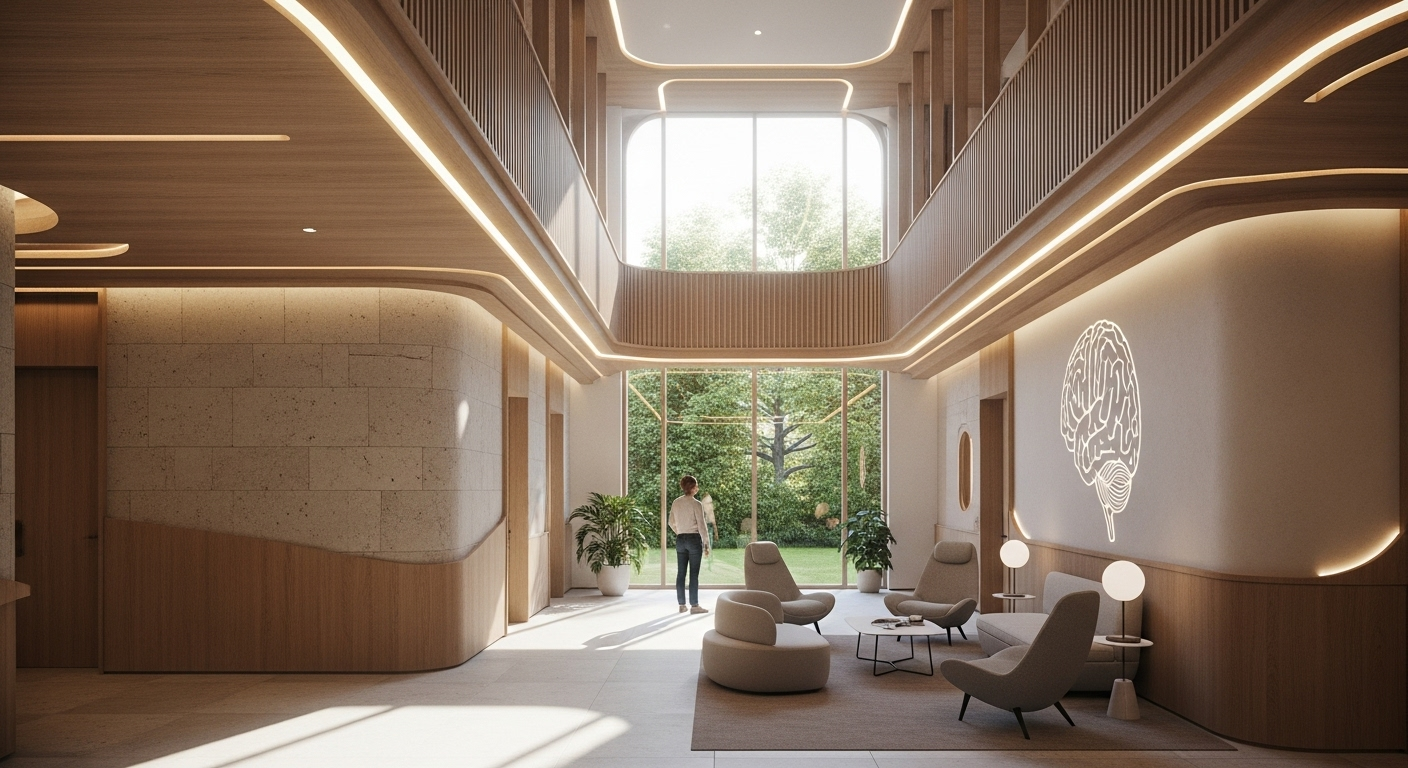Neuroarchitecture: Shaping Spaces for Mental Wellbeing
The intersection of neuroscience and architecture is revolutionizing our approach to designing living and working environments. Neuroarchitecture, a burgeoning field, explores how physical spaces impact our brain function, emotions, and overall mental health. This innovative discipline is transforming the way we conceive and construct our surroundings, aiming to create spaces that nurture cognitive function and emotional wellbeing. Read below to delve into the fascinating world of neuroarchitecture and its potential to reshape our built environment.

The core principle of neuroarchitecture is that our surroundings have a profound impact on our neurological processes. This includes everything from our stress levels and cognitive performance to our mood and social interactions. By understanding these neurological responses, architects and designers can create spaces that promote wellbeing, enhance productivity, and foster positive emotional states.
Key Elements of Neuroarchitectural Design
Several key elements form the foundation of neuroarchitectural design. Natural light, for instance, plays a crucial role in regulating our circadian rhythms and mood. Studies have shown that exposure to natural light can improve cognitive performance, reduce stress, and even accelerate healing in hospital settings.
Color is another critical factor. Different hues can elicit various emotional and physiological responses. For example, blue tones are often associated with calmness and improved focus, while warmer colors like red and orange can stimulate energy and creativity.
Spatial layout also significantly impacts our mental state. Open, airy spaces can reduce feelings of confinement and anxiety, while strategic placement of walls and partitions can create a sense of privacy and security. The incorporation of biophilic design elements, such as indoor plants or water features, has been shown to reduce stress and improve overall wellbeing.
Neuroarchitecture in the Workplace
The application of neuroarchitectural principles in office design has gained significant momentum in recent years. Companies are increasingly recognizing the link between workspace design and employee performance, satisfaction, and wellbeing.
Neuroarchitecture in the workplace often involves creating diverse spaces that cater to different work styles and cognitive needs. This might include quiet areas for focused work, collaborative spaces for team projects, and relaxation zones for mental recharge. The use of adjustable lighting, ergonomic furniture, and nature-inspired elements are also common features in neuroarchitecture-informed office designs.
Some forward-thinking companies have gone as far as incorporating sensory rooms or meditation spaces into their office layouts. These areas are designed to provide employees with a retreat for mental restoration, potentially boosting creativity and reducing burnout.
Neuroarchitecture in Healthcare Settings
Healthcare facilities have been at the forefront of adopting neuroarchitectural principles. Hospitals and clinics are increasingly designed with patient wellbeing in mind, moving away from the sterile, institutional environments of the past.
In these settings, neuroarchitecture focuses on creating spaces that reduce stress and promote healing. This might involve designing patient rooms with views of nature, incorporating artwork that evokes positive emotions, or creating social spaces that foster a sense of community among patients and staff.
Research has shown that such design interventions can lead to tangible health benefits. Patients in rooms with natural views have been found to recover faster and require less pain medication compared to those in rooms without such views. Similarly, the use of calming colors and nature-inspired designs in waiting areas has been linked to reduced anxiety among patients.
The Future of Neuroarchitecture
As our understanding of the brain-environment relationship deepens, the potential applications of neuroarchitecture continue to expand. Emerging technologies, such as virtual and augmented reality, are opening up new possibilities for testing and implementing neuroarchitectural designs.
In the future, we may see more personalized approaches to neuroarchitecture. Imagine spaces that can adapt in real-time to an individual’s physiological state, adjusting lighting, temperature, or even layout to optimize cognitive function and emotional wellbeing.
The integration of neuroarchitecture with smart home technologies also holds promise. Future living spaces might be able to sense occupants’ stress levels and automatically adjust environmental factors to promote relaxation.
Challenges and Ethical Considerations
While the potential benefits of neuroarchitecture are significant, the field also faces challenges and ethical considerations. One major concern is the potential for misuse or manipulation. If spaces can be designed to influence our mental states, there’s a risk that this knowledge could be used to manipulate behavior in ways that benefit corporations or institutions at the expense of individual wellbeing.
There’s also the question of standardization and individual differences. What works for one person may not work for another, and creating spaces that cater to diverse neurological needs is a complex challenge.
Moreover, as neuroarchitecture gains popularity, there’s a risk of oversimplification or misapplication of its principles. It’s crucial that the field continues to be grounded in rigorous scientific research rather than falling prey to pseudoscientific trends.
Neuroarchitecture represents a paradigm shift in how we approach the design of our built environment. By considering the neurological impact of our surroundings, we have the potential to create spaces that not only look good but actively contribute to our mental health and cognitive functioning. As research in this field progresses, we can look forward to a future where our homes, workplaces, and public spaces are designed not just for aesthetic appeal, but for the holistic wellbeing of those who inhabit them.





